
AI and the Retail Marketer’s Future
How AI transforms strategy and processes, driving the adoption of Positionless Marketing
Exclusive Forrester Report on AI in Marketing
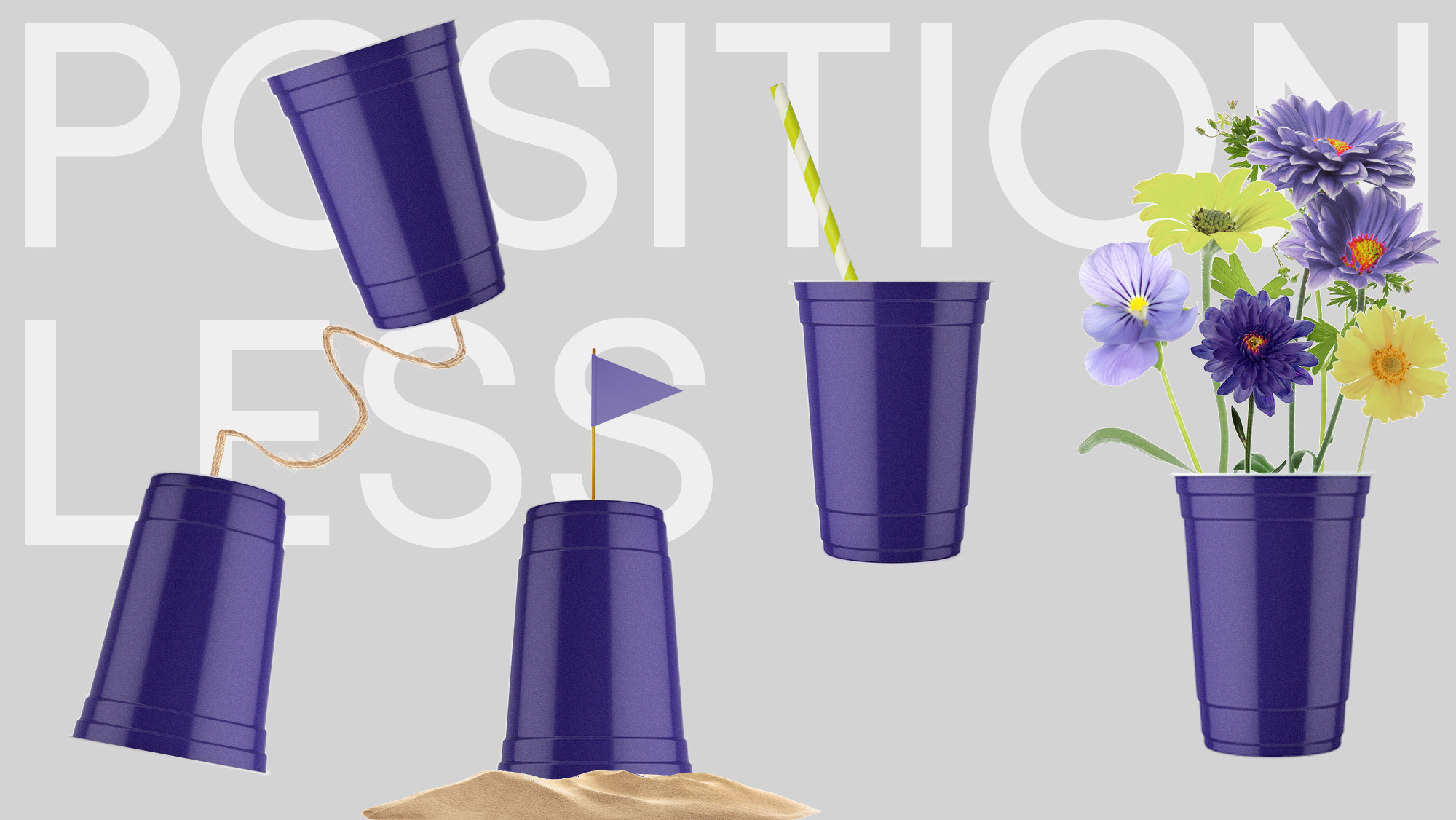
The way lottery and online lottery work - where the jackpot continues to grow after every draw with no winning jackpot ticket, causing prizes to balloon and burst - makes the lottery industry unstable and unique compared to other gaming providers.
This is an example of the US Mega Millions Lottery, which its draws are held every Tuesday and Friday:
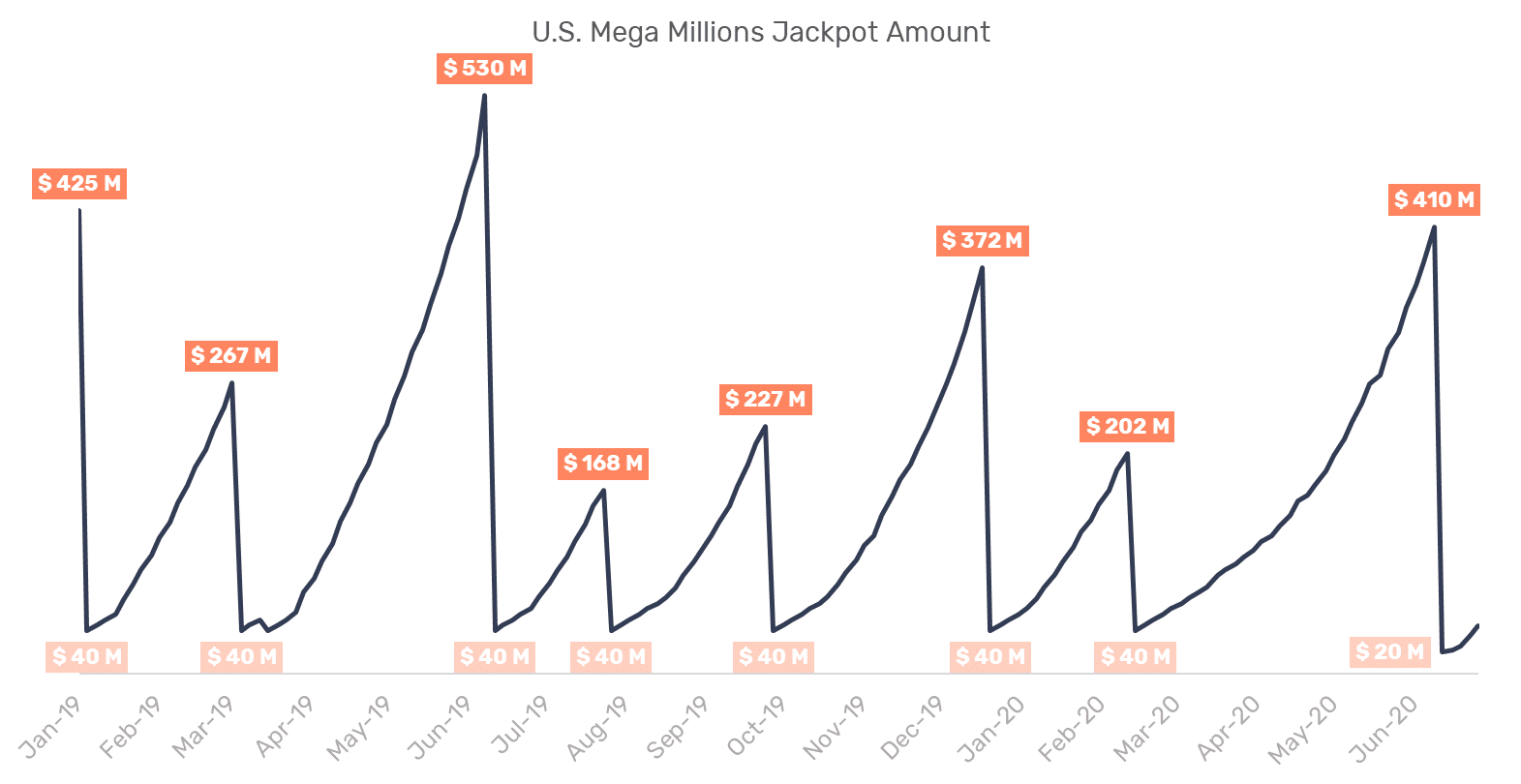 The trend consists of many peaks throughout the year. However not every peak represents a very high jackpot. To define high jackpots, we need to investigate a large timeframe. Let's look on a yearly distribution:
The trend consists of many peaks throughout the year. However not every peak represents a very high jackpot. To define high jackpots, we need to investigate a large timeframe. Let's look on a yearly distribution:
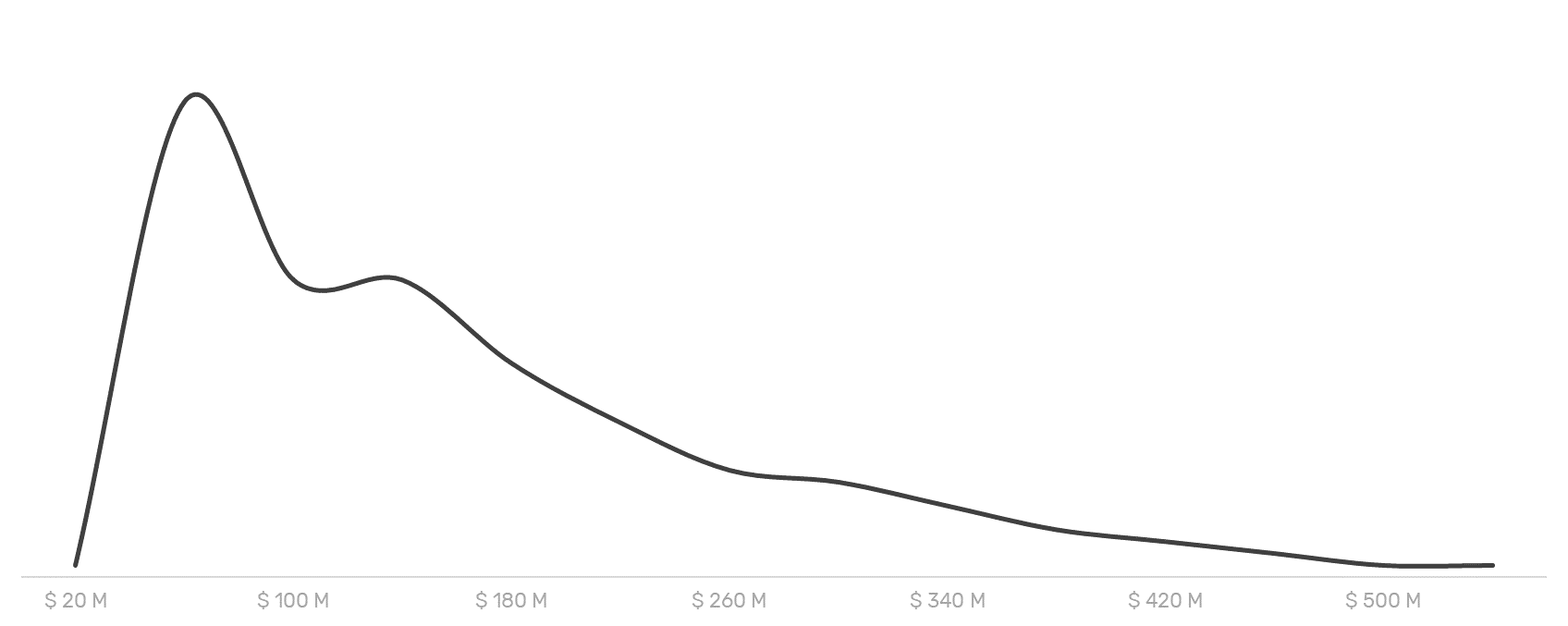 We can see it's a right-tailed distribution – most of the draws will be around the average, and there's a right tail of the large amounts.
With the yearly view, it's easier to define a high jackpot threshold - which could be static or dynamic but should be different for each lottery.
In this example, we took the top 10% in the past year:
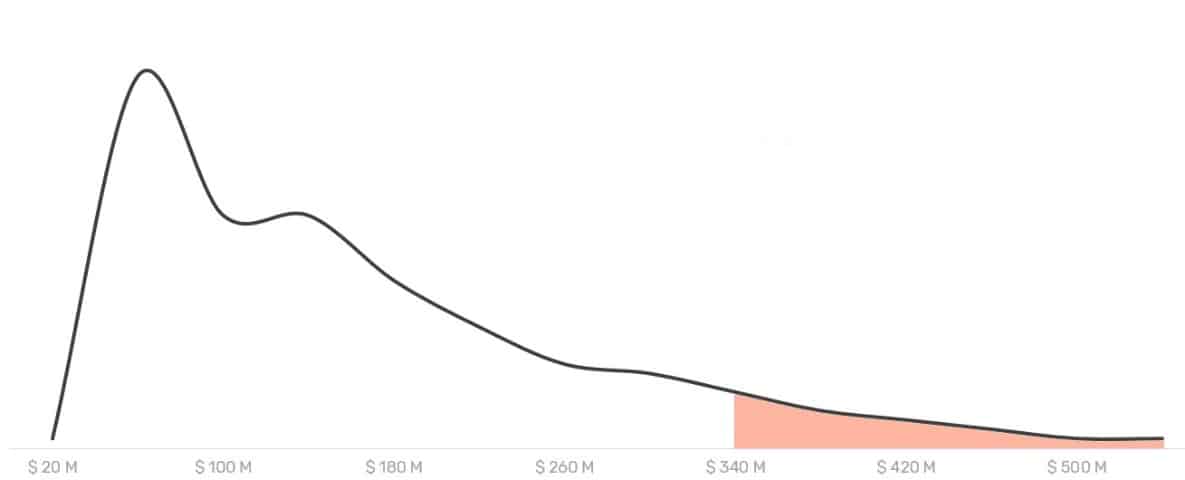
Using this definition for a high jackpot, we can see that there was a high jackpot only three times during the examined period.
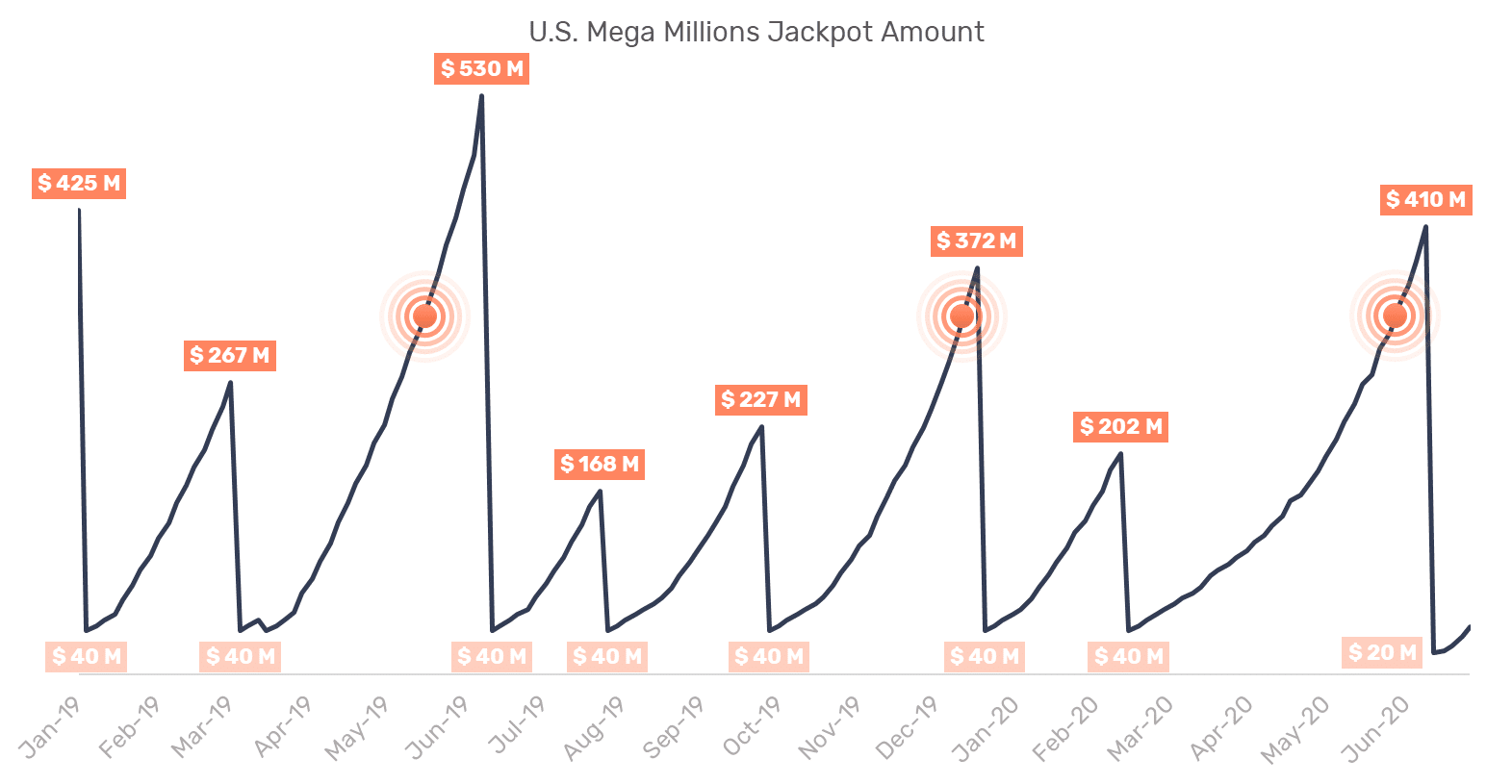 It's a low frequency. However, it has a significant effect on customers' behavior.
How do high jackpots affect customer's behavior?
As expected, the jackpot amount has a significant impact on customers' behavior.
It prompts more customers to purchase tickets. Many customers will buy a ticket only when there's a high jackpot even though the odds of winning might be lower.
It makes some psychological sense. it's a small investment for the (very small) chance of a life-changing prize. This is why the betting frequency is highly correlated with the prize size, as we can see below.
The dots represent the number of daily bets, and as expected, it correlates with the jackpot amount.
It's a low frequency. However, it has a significant effect on customers' behavior.
How do high jackpots affect customer's behavior?
As expected, the jackpot amount has a significant impact on customers' behavior.
It prompts more customers to purchase tickets. Many customers will buy a ticket only when there's a high jackpot even though the odds of winning might be lower.
It makes some psychological sense. it's a small investment for the (very small) chance of a life-changing prize. This is why the betting frequency is highly correlated with the prize size, as we can see below.
The dots represent the number of daily bets, and as expected, it correlates with the jackpot amount.
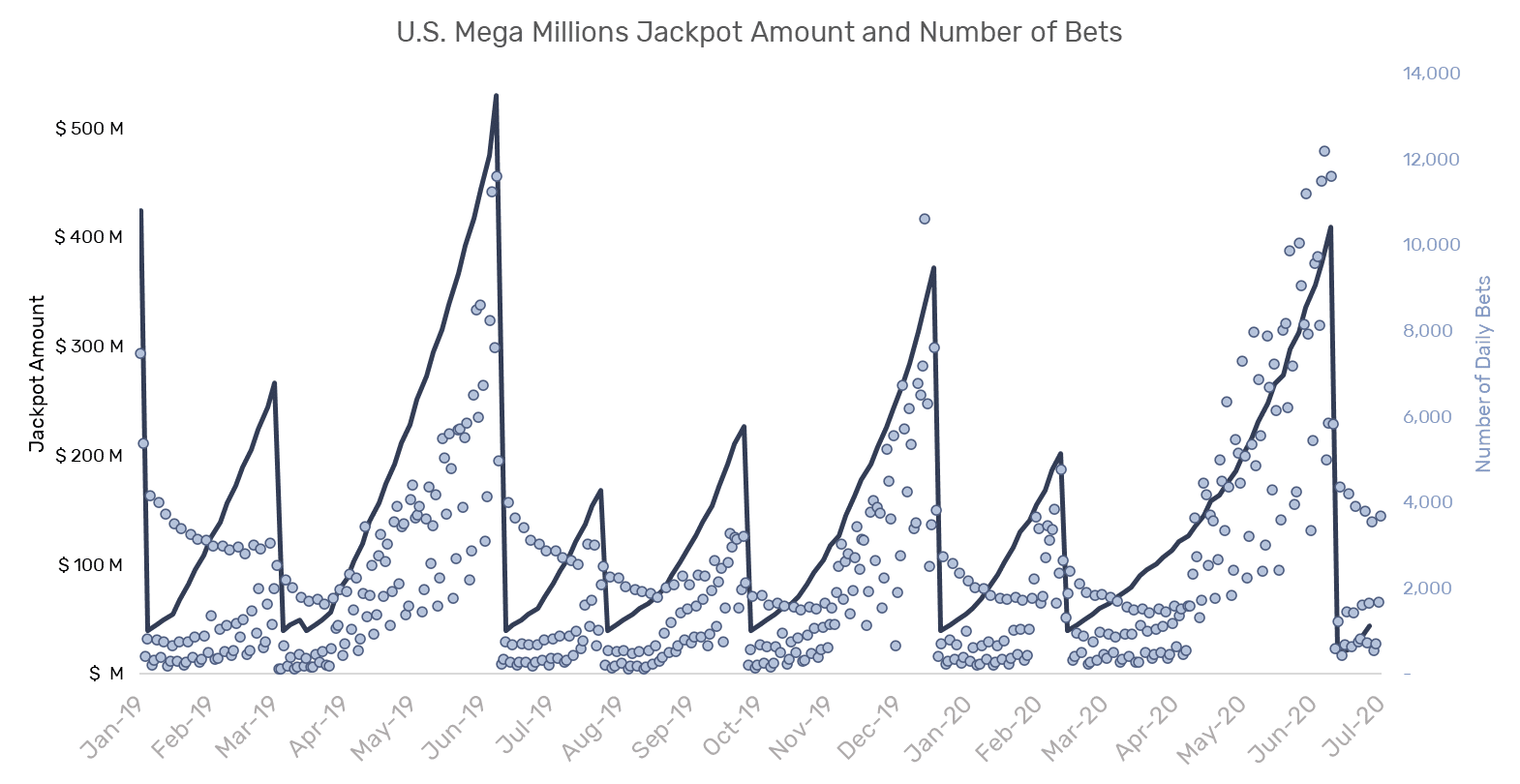 When the jackpot amount is higher – so is the number of daily bets. There's also an impact on the bet day – on a draw day, the number of bets is higher.
But what exactly is the impact of the jackpots? Well, it's enormous.
When analyzing some leading online lottery brands, results amazed us - 80% of the customers purchase their first ticket on 10% of the jackpots!
The volatility of the jackpot amount also affects the volatility of other KPIs of the jackpot industry. During the jackpot period, the conversion rate and the reactivation rate will be doubled or more.
These jackpots heavily affect the customers, so they can be used smartly to predict the customers' behavior and define a new persona: jackpot sensitive customers.
Jackpot sensitivity definition
Let's compare 2 personas.
One is an active player in the U.S Mega Millions. She purchases tickets every week for Tuesday's draw.
The second purchased her first ticket for U.S Mega Millions in October 2018, when the jackpot amount was a record high. Since then, she buys tickets from time to time only when the jackpot amount reaches high amounts.
Those 2 well-known personas in the lottery industry are different from each other, requiring different communications. We can identify them by defining a "jackpot sensitivity" rate.
There are various methods of calculating the jackpot sensitivity; however, the most common one is calculating the rate of the high jackpots among others per customer.
For example, if the second one participated in 10 draws during the past year, 8 of the draws were defined as high jackpot – which is the top 10% of the draws – her rate is 80%, which means he's a very jackpot-sensitive player.
Based on our research, 50% of the online lottery customers are jackpot sensitive – placed more than 50% of their bets on high jackpots.
The sensitivity correlates with the loyalty: the jackpot customers have higher churn rates and lower future value.
When the jackpot amount is higher – so is the number of daily bets. There's also an impact on the bet day – on a draw day, the number of bets is higher.
But what exactly is the impact of the jackpots? Well, it's enormous.
When analyzing some leading online lottery brands, results amazed us - 80% of the customers purchase their first ticket on 10% of the jackpots!
The volatility of the jackpot amount also affects the volatility of other KPIs of the jackpot industry. During the jackpot period, the conversion rate and the reactivation rate will be doubled or more.
These jackpots heavily affect the customers, so they can be used smartly to predict the customers' behavior and define a new persona: jackpot sensitive customers.
Jackpot sensitivity definition
Let's compare 2 personas.
One is an active player in the U.S Mega Millions. She purchases tickets every week for Tuesday's draw.
The second purchased her first ticket for U.S Mega Millions in October 2018, when the jackpot amount was a record high. Since then, she buys tickets from time to time only when the jackpot amount reaches high amounts.
Those 2 well-known personas in the lottery industry are different from each other, requiring different communications. We can identify them by defining a "jackpot sensitivity" rate.
There are various methods of calculating the jackpot sensitivity; however, the most common one is calculating the rate of the high jackpots among others per customer.
For example, if the second one participated in 10 draws during the past year, 8 of the draws were defined as high jackpot – which is the top 10% of the draws – her rate is 80%, which means he's a very jackpot-sensitive player.
Based on our research, 50% of the online lottery customers are jackpot sensitive – placed more than 50% of their bets on high jackpots.
The sensitivity correlates with the loyalty: the jackpot customers have higher churn rates and lower future value.
 We can also use the sensitivity of the customer to predict their behavior in the future. Customers who were jackpot sensitive before, are more likely to bet on a high jackpot in their next activity.
We can also use the sensitivity of the customer to predict their behavior in the future. Customers who were jackpot sensitive before, are more likely to bet on a high jackpot in their next activity.
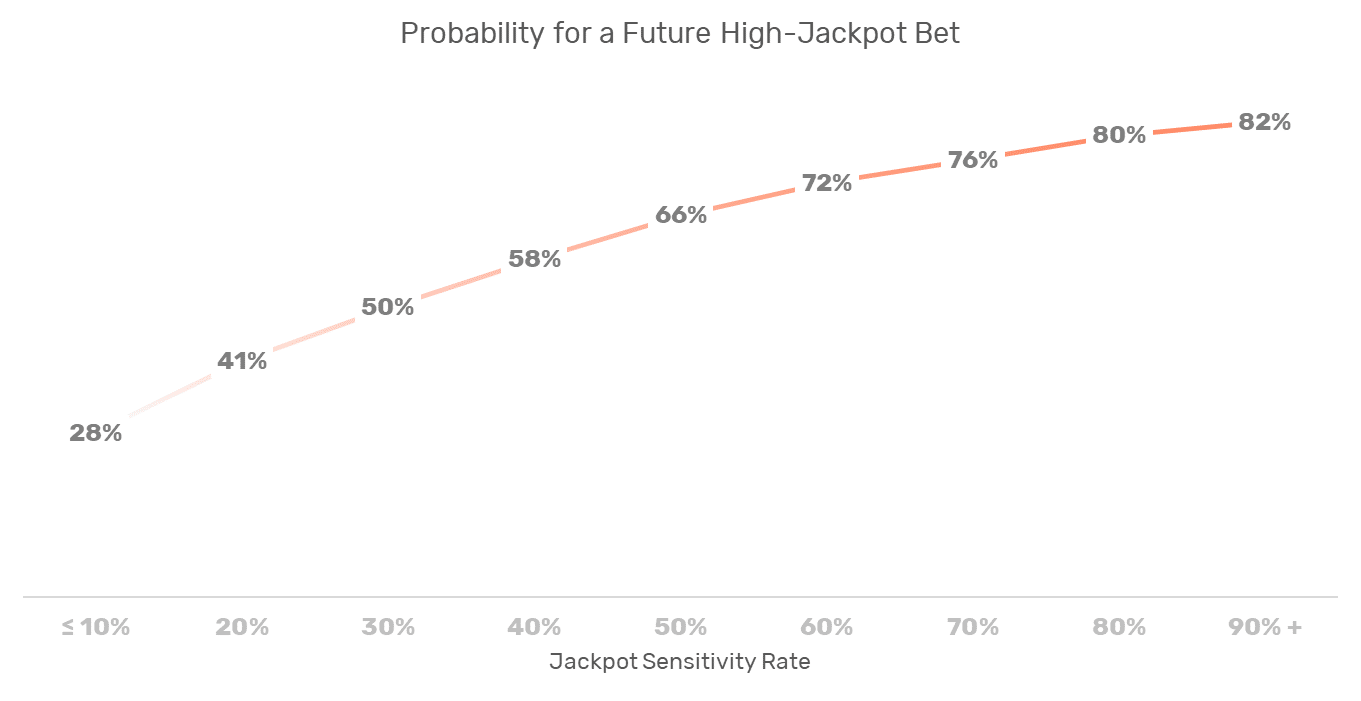 Strategy
So what can we do to address the jackpot-sensitive customers?
The jackpot sensitive customers are indeed less valuable compared to the non-sensitive. However, they represent a huge portion of the total players population.
Thus, you should utilize the jackpots to convert, retain, and reactivate your customers. The jackpot is a fantastic motivator and usually doesn't require any offer - only a reminder is enough.
Follow these principles to create a unique recurring jackpot funnel:
Strategy
So what can we do to address the jackpot-sensitive customers?
The jackpot sensitive customers are indeed less valuable compared to the non-sensitive. However, they represent a huge portion of the total players population.
Thus, you should utilize the jackpots to convert, retain, and reactivate your customers. The jackpot is a fantastic motivator and usually doesn't require any offer - only a reminder is enough.
Follow these principles to create a unique recurring jackpot funnel:
Good luck!
Exclusive Forrester Report on AI in Marketing
In this proprietary Forrester report, learn how global marketers use AI and Positionless Marketing to streamline workflows and increase relevance.
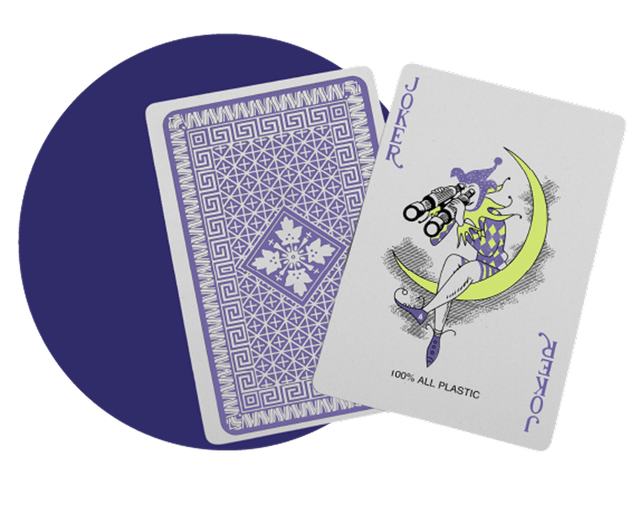

Writers in the Optimove Team include marketing, R&D, product, data science, customer success, and technology experts who were instrumental in the creation of Positionless Marketing, a movement enabling marketers to do anything, and be everything.
Optimove’s leaders’ diverse expertise and real-world experience provide expert commentary and insight into proven and leading-edge marketing practices and trends.


